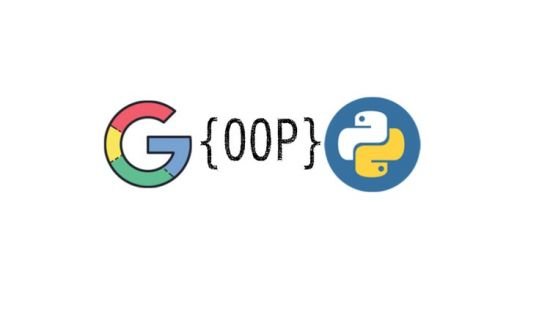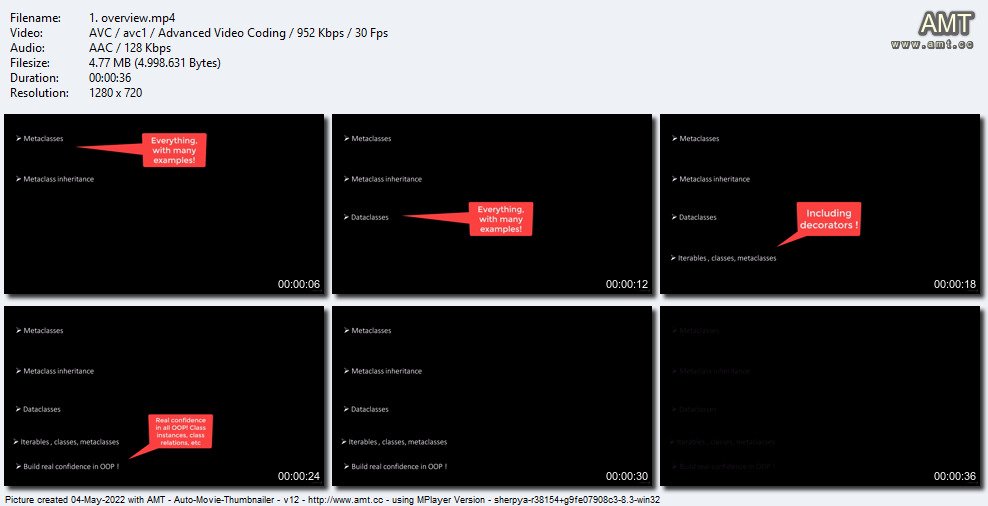
Published 05/2022
MP4 | Video: h264, 1280×720 | Audio: AAC, 44.1 KHz, 2 Ch
Genre: eLearning | Language: English + srt | Duration: 17 lectures (5h 51m) | Size: 2.17 GB
Build confidence on Python regular/meta/super/base/data classes – all about classes here!
What you’ll learn
Build expertise with classes
Learn how to do class instantiation properly and efficiently
Learn how to properly use metaclasses and why
Decorate classes and improve performance
Double the efficiency of the object oriented process
Identify differences in meta/super/base/child classes
Get strong in OOP
Verify class relations in the most effective way
Requirements
No requirements other than have some working level with python. We go step by step
Description
A common feature of objects is that procedures (or methods) are attached to them and can access and modify the object’s data fields. Object-oriented programming uses objects, but not all of the associated techniques and structures are supported directly in languages that claim to support OOP. It performs operations on operands.
Modular programming support provides the ability to group procedures into files and modules for organizational purposes. Modules are namespaced so identifiers in one module will not conflict with a procedure or variable sharing the same name in another file or module.
Objects can contain other objects in their instance variables; this is known as object composition. For example, an object in the Employee class might contain (either directly or through a pointer) an object in the Address class, in addition to its own instance variables like “first_name” and “position”. Object composition is used to represent “has-a” relationships: every employee has an address, so every Employee object has access to a place to store an Address object (either directly embedded within itself, or at a separate location addressed via a pointer).
OOP was developed to increase the reusability and maintainability of source code. Transparent representation of the control flow had no priority and was meant to be handled by a compiler. With the increasing relevance of parallel hardware and multithreaded coding, developing transparent control flow becomes more important, something hard to achieve with OOP.
In object-oriented programming, a metaclass is a class whose instances are classes. Just as an ordinary class defines the behavior of certain objects, a metaclass defines the behavior of certain classes and their instances. Not all object-oriented programming languages support metaclasses. Among those that do, the extent to which metaclasses can override any given aspect of class behavior varies. Metaclasses can be implemented by having classes be first-class citizens, in which case a metaclass is simply an object that constructs classes. Each language has its own metaobject protocol, a set of rules that govern how objects, classes, and metaclasses interact. The term metaprogramming refers to the potential for a program to have knowledge of or manipulate itself. Python supports a form of metaprogramming for classes called metaclasses.
Who this course is for
data analysts
data scientists
software engineers
pythonistas and experts alike
entrepreneurs

Password/解压密码www.tbtos.com
转载请注明:0daytown » OOP Bootcamp2022 – Classes, Metaclasses, Dataclasses- Python